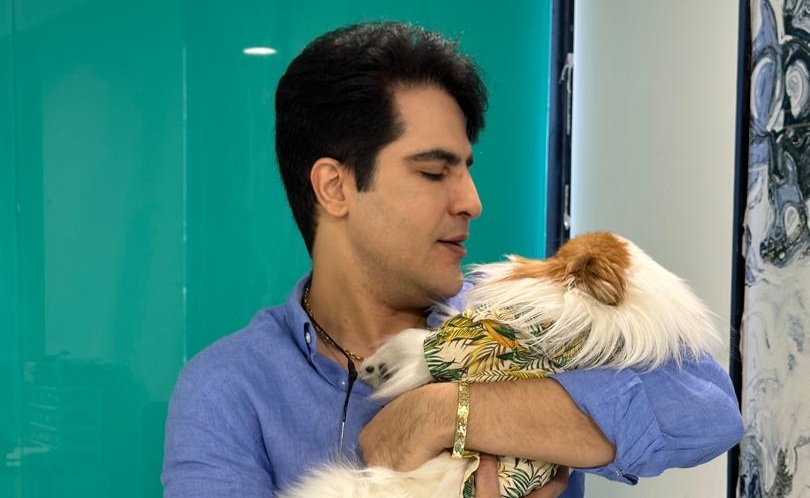
The updated Face-Off Laser Method, developed by Dr. Amir Feily, marks a major advancement in the treatment of patients with a history of skin grafting and severe burns.
This new version, featuring significant improvements in energy control, penetration depth, and tissue-regeneration techniques, bridges the gap between non-invasive therapy and advanced clinical outcomes.
A Breakthrough in Treating Complex Cases
Historically, managing post-burn and grafted skin lesions has been one of the greatest challenges in reconstructive dermatology.
Grafted skin often shows limited responsiveness and a high risk of inflammation, scarring, and pigment irregularities — discouraging many physicians…
[12:18, 11/12/2025] Mohsen AVID: The New Version of Face-Off Laser Therapy in Burn and Skin-Graft Patients
Abstract
In recent years, advances in laser technology have significantly expanded its applications in the field of skin repair and facial reconstruction.
The new version of the Face-Off Laser Method, developed and directed by Dr. Amir Feily, has been specifically designed to treat patients with a history of skin grafts and severe burns.
This update has remarkably improved clinical outcomes and introduced an innovative approach to reconstructive medicine.
Introduction
Patients with burn injuries or skin grafts have always posed one of the most challenging cases in reconstructive dermatology.
In classical treatment methods, skin regeneration in these patients was complicated by structural changes in the tissue, limited responsiveness, and the potential for infection.
As a result, many physicians were reluctant to undertake such treatments, and the overall outcomes were often unsatisfactory.
With the introduction of the new Face-Off Laser, many of these limitations have been overcome, enabling precise and low-trauma regeneration of grafted tissues with superior accuracy and minimal complications.
Materials and Methods
In the updated version of Face-Off, key laser parameters — including energy output, penetration depth, and thermal distribution — are dynamically and precisely calibrated.
These adjustments are personalized for each patient, depending on skin structure, injury type, and graft condition.
In addition, the use of exclusive local anesthesia techniques and advanced tissue-regeneration protocols allows the procedure to be performed safely, without the need for general anesthesia or protective dressings.
Immediately after treatment, the skin surface stabilizes, eliminating the need for facial coverings or postoperative dressings.
Clinical Results and Observations
Clinical studies conducted on a group of burn and graft patients demonstrated that:
Complete healing occurred in less than seven days.
Post-treatment inflammation, redness, and pain were reduced by up to 90% compared with conventional methods.
The treated skin showed natural tone, texture, and elasticity, closely resembling healthy tissue.
No cases of scarring or secondary infection were reported.
These findings confirm the Face-Off Laser’s ability to regenerate complex skin structures and significantly improve patients’ quality of life.
Discussion and Conclusion
The new Face-Off Laser technique represents a major milestone in merging reconstructive and aesthetic medicine.
By eliminating the need for surgery and dressings, it has transformed the skin-healing process into a rapid, painless, and safe experience.
From a scientific perspective, the technology not only restores structural integrity but also revives physiological functions such as heat sensation, tactile feedback, and microcirculation in the treated areas.
With continued clinical research and wider adoption, the Face-Off Laser is expected to become a new standard of care for burn and graft patients in Iran and across the region.
Final Conclusion
The analysis demonstrates that the new Face-Off Laser is not only an effective therapeutic tool for reconstructing grafted and burned skin but also a modern, human-centered approach to regenerative medicine.
By eliminating pain, dressings, and long recovery periods, it allows patients to regain their appearance, confidence, and normal life in the shortest possible time.
Additional Update
The latest version of the Face-Off Laser has been specifically optimized for patients with a history of skin grafting and severe burns, delivering a transformative improvement in outcomes for this patient group.
Historically, treatments for such patients yielded limited results due to the difficulty and complexity of managing grafted skin.
However, the new Face-Off update, with enhanced energy parameters, controlled depth penetration, and exclusive anesthesia and tissue-regeneration techniques, now achieves results that were previously thought unattainable.
This advancement marks a true turning point in restoring both function and aesthetics, as well as the overall quality of life of graft and burn patients.
In this updated protocol — thanks to recent technological refinements — the Face-Off Laser requires no dressings or facial shields, operates without pain, and is performed under light anesthesia with zero downtime, allowing patients to return immediately to their daily activities.
Even male patients, who often cannot take time away from work or social interactions, can now undergo the procedure comfortably and safely.

 icons at the top
right corner of the subsection.
icons at the top
right corner of the subsection.